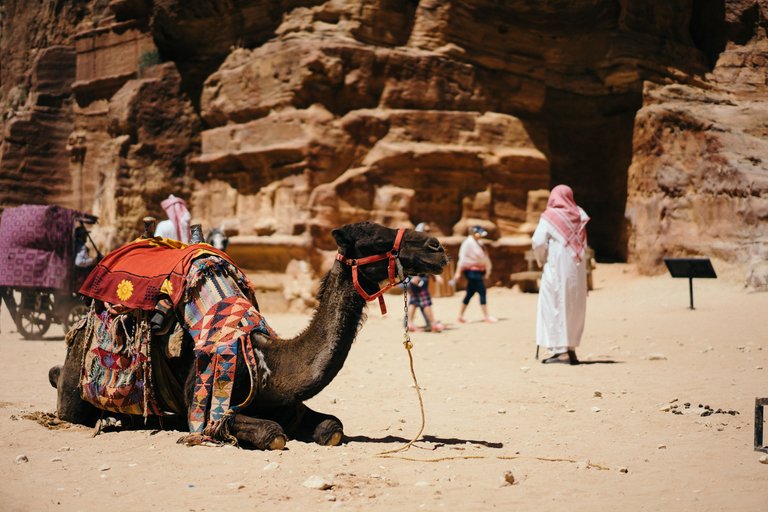◆ Physiology professor Knut Schmidt-Nielsen conducted a study of camels in the Sahara Desert. His findings reveal how the camel, marvelously designed by the Creator, is able to endure the extreme heat of his environment:
 Photo by Adam Jang on Unsplash
Photo by Adam Jang on Unsplash
“In the burning heat of the desert an inanimate object such as a rock may reach a temperature of more than 150 degrees F. A camel in such an environment, like a man, maintains a tolerable body temperature by sweating. But where the temperature of the man remains virtually constant as the day grows hotter, the temperature of the camel increases slowly to about 105 degrees. As the temperature of the camel rises, the animal sweats very little; only when its temperature reaches 105 degrees does it sweat freely. The camel’s elevated temperature also lessens its absorption of heat, which of course depends on the difference between the temperature of its body and that of the environment.
“The camel lowers the heat load on its body still further by letting its temperature fall below normal during the cool desert night. At dawn its temperature may have dropped as low as 93 degrees. Thus much of the day will elapse before the animal’s body heats up to 105 degrees and sweating must set in. As a result of its flexible body temperature the camel sweats little except during the hottest hours of the day, where a man in the same environment perspires almost from sunrise to sunset. . . .
“The camel employs camel-hair insulation to lower its heat load still further. Even during the summer, when the camel sheds much of its wool, it retains a layer several inches thick on its back where the sun beats down. When we sheared the wool from one of our camels, we found that the shorn animal produced 60 per cent more sweat than an unshorn one. . . .
“The camel’s hump also helps indirectly to lessen the heat load on the animal. Nearly all mammals possess a food reserve in the form of fat, but in most of them the fat is distributed fairly uniformly over the body just beneath the skin. In having its fat concentrated in one place the camel lacks insulation between its body and its skin, where evaporative cooling takes place. The absence of insulation facilitates the flow of heat outward, just as the insulating wool slows the flow of heat inward.”
Thanks For Reading
Hi! I am a robot. I just upvoted you! I found similar content that readers might be interested in:
http://www.aboutwildanimals.com/2016/09/how-camel-beats-heat-of-desert.html
@cheetah thank you for the information.
This post recieved an upvote from minnowpond. If you would like to recieve upvotes from minnowpond on all your posts, simply FOLLOW @minnowpond
Truely said. I know it since am in Oman and can experience the same. Great post. Upvoted and following u. Do review my post as well and provide your feedback if possible. my post can indeed change the way you all lead your life. https://steemit.com/philosophy/@nainaztengra/how-to-cultivate-awareness
@minaztengra thanks ,glad you like it . i will go through your post .
Congratulations! This post has been upvoted from the communal account, @minnowsupport, by eddyova from the Minnow Support Project. It's a witness project run by aggroed, ausbitbank, teamsteem, theprophet0, someguy123, neoxian, followbtcnews/crimsonclad, and netuoso. The goal is to help Steemit grow by supporting Minnows and creating a social network. Please find us in the Peace, Abundance, and Liberty Network (PALnet) Discord Channel. It's a completely public and open space to all members of the Steemit community who voluntarily choose to be there.